✓ Joining us on our Whatsapp Channel: 💬 Explore and Escape!.
Booking through us:
✓ 🏩 🛌 Handpicked Luxury Stays in Budget: Booking.com | Agoda.com
✓ 🍹⛱️ Deals on Private xfers, SIM Cards, City tours, Day trips : 📍🗺️ GetYourGuide | 🛵🧳 Klook
There are great many landmarks in South America, and so are in Northern Territory
The Northern Territory is a vast and ancient land where time seems to stand still.
Its rugged countryside is enriched with a breathtaking array of natural wonderlands that leave visitors spellbound.
From the iconic red rocks of Uluru to the lush waterfalls of Kakadu National Park, the Northern Territory is a canvas of awe-inspiring natural landscapes that invite exploration and wonder.
Each landmark boasts a unique story, a tantalizing history that speaks to the timeless beauty of this wild and wonderful land.
Without further ado listed below are some of the most famous natural landmarks in Northern Territory:
1. Uluru (Ayers Rock)
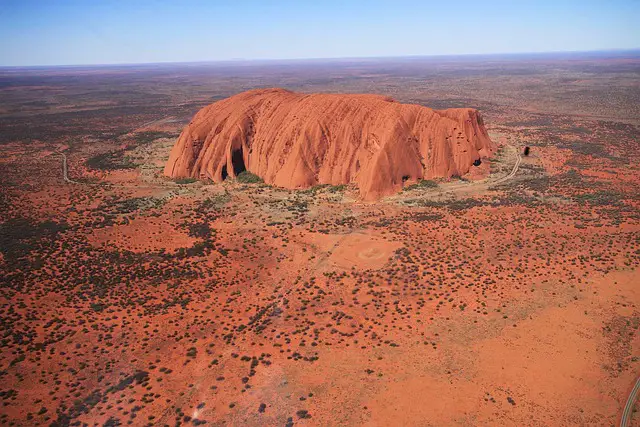
Uluru, also known as Ayers Rock, is a large sandstone rock formation located in the Northern Territory of Australia.
What to see or do: Take a guided tour to learn about the cultural importance and history of Uluru to the Anangu people.
Don’t miss: Be sure to witness the Field of Light art installation, which illuminates the desert landscape around Uluru with thousands of colorful lights.
Insider travel tips: Respect the cultural significance of Uluru and follow the guidelines set by the Anangu people, such as refraining from climbing the rock.
2. Kata Tjuta (The Olgas)

A group of large, domed rock formations located in Uluru-Kata Tjuta National Park in the Northern Territory of Australia.
What to see or do: Visitors can take a leisurely stroll or a challenging hike through the valley at the base of the rock formations. There are several trails of varying difficulty that offer stunning views of the surrounding landscape.
Don’t miss: The best time to visit is during sunrise or sunset when the rock formations change colors and the views are truly remarkable.
Insider travel tips: Bring plenty of water and sun protection as the area can get very hot during the day. It’s also important to respect the traditions and culture of the local Anangu people who consider this area sacred.
3. Nitmiluk National Park (Katherine Gorge)

Nitmiluk National Park, also known as Katherine Gorge, is a stunning natural wonder located in the Northern Territory of Australia. The park is home to a series of breathtaking sandstone gorges carved by the Katherine River.
What to see or do: Explore the gorges through a variety of activities, including canoeing or taking a scenic boat cruise. Hike along the many trails and take in the stunning views of the surrounding landscape. Enjoy a refreshing swim in one of the gorgeous natural plunge pools.
Don’t miss: A visit to Nitmiluk National Park wouldn’t be complete without taking a boat tour through Katherine Gorge. It’s the best way to experience the intricate network of waterways and towering rock formations.
Insider travel tips: Be sure to bring a hat, sunscreen, and plenty of water as the heat can be intense. Consider visiting in the cooler months from May to September to avoid extreme heat and humidity. Avoid swimming outside of designated areas and always follow safety signs as the water levels can change rapidly. Also, make sure to bring a camera to capture the breathtaking scenery.
4. Kakadu National Park

Kakadu National Park is a UNESCO World Heritage Site located in the Northern Territory of Australia. The park covers an area of over 19,000 square kilometers and is home to an incredible diversity of landscapes and wildlife.
What to see or do: Explore Aboriginal rock art at Ubirr, admire the cascading Jim Jim Falls, take a dip in one of the many natural swimming holes, and spot crocodiles on a Yellow Water Cruise. Kakadu is also a bird-watching paradise with over 280 species of birds calling the park home.
Don’t miss: Witness a stunning sunset over the wetlands of Kakadu, and take in the breathtaking views of the landscape from the top of the escarpment at Gunlom Falls.
Insider travel tips: Bring plenty of water and mosquito repellent, as the park can get very hot and humid. For a unique experience, consider staying at one of the park’s campsites, which offer a variety of accommodations from tents to cabins. Make sure to also respect the park’s cultural significance to the local Aboriginal people by following the signs and staying on designated trails.
5. Litchfield National Park
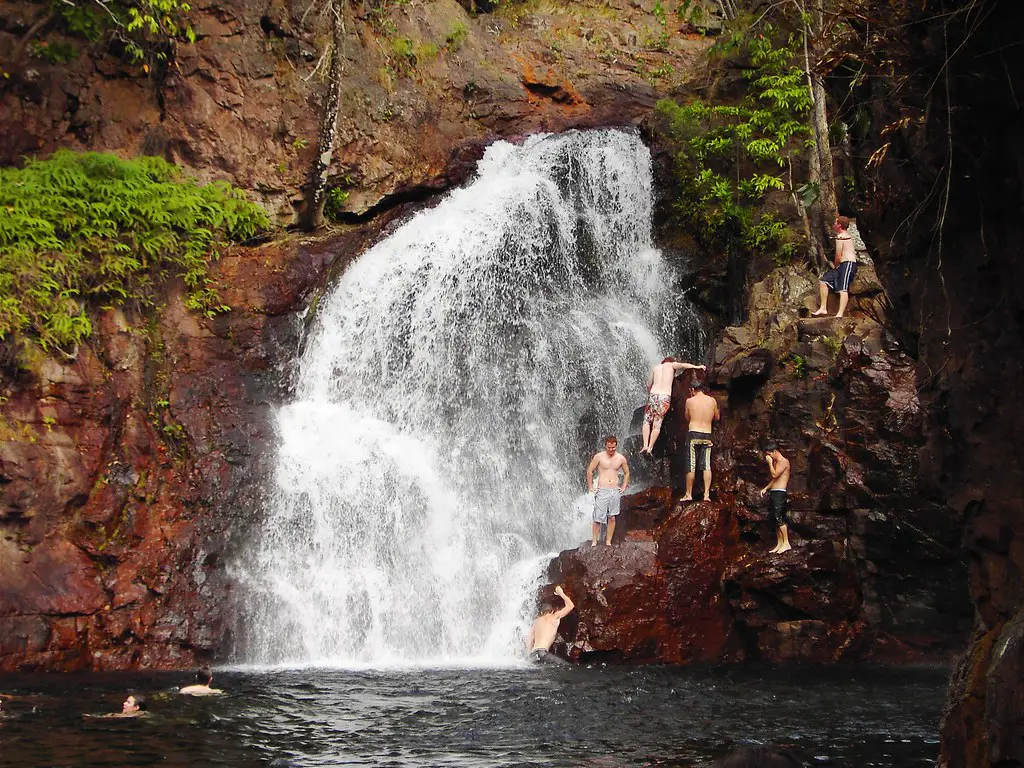
Litchfield National Park is a stunning natural park in the Northern Territory of Australia, known for its crystal-clear swimming holes, waterfalls, and diverse wildlife.
What to see or do: – Swim in the refreshing and picturesque natural swimming holes such as Wangi Falls, Buley Rockhole, and Florence Falls.
Don’t miss: – The impressive Tolmer Falls, where you can see breathtaking views from the lookout.
Insider travel tips: – Visit during the dry season (May-September) to avoid the crowds and make the most of the spectacular scenery in comfortable temperatures.
6. West MacDonnell Ranges

The West MacDonnell Ranges National Park is a stunning showcase of Central Australia’s natural beauty. This 161-kilometre chain of mountains, gorges, and waterholes is a must-visit destination for anyone travelling through the Northern Territory.
What to see or do: – Hike the Larapinta Trail, a 223-kilometre walking track that offers breathtaking panoramic views of the region.
Don’t miss: Don’t miss the incredible scenery of Standley Chasm, with its towering walls and tranquil waterhole. Also, make sure you see the iconic picture of the Ochre Pits, where vibrant coloured rock was traditionally used as paint and ceremonial makeup.
Insider travel tips: – Visit in the cooler months (May to September) to avoid the scorching heat of summer.
7. East MacDonnell Ranges

A scenic mountain range located east of Alice Springs in the Northern Territory, Australia.
What to see or do: Explore the mountain range and discover unique geological formations, picturesque landscapes, and rich cultural heritage. Visit Emily Gap, Trephina Gorge, and N’Dhala Gorge, which are some of the popular attractions in this area. You can also go bushwalking, camping, and bird-watching in the natural surroundings.
Don’t miss: Standley Chasm, a narrow gorge that produces a spectacular display of red rock walls at midday when the sun is overhead. Also, don’t miss the opportunity to see the ancient rock art sites that offer a glimpse into the Aboriginal culture and traditions.
Insider travel tips: Carry plenty of water, sunscreen, and insect repellent, as temperatures can be extreme during the day. It is advisable to visit during the cooler months (May to September) as the weather is more pleasant. If you plan to explore the area without a guided tour, make sure to check weather conditions and road access before you go, as they can change quickly.
8. Devils Marbles Conservation Reserve
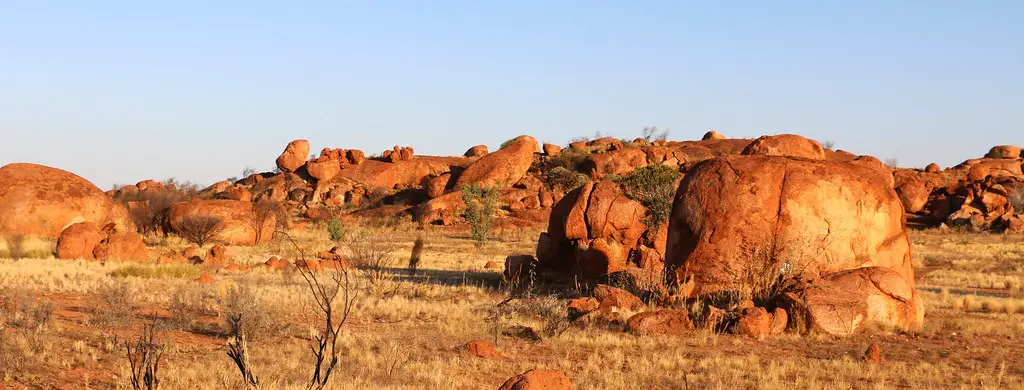
Devils Marbles Conservation Reserve is a protected area located in the Northern Territory of Australia. It covers an area of 1,802 hectares and is known for its impressive collection of granite boulders.
What to see or do: Visitors can explore the reserve’s walking tracks to marvel at the fascinating geological formations of the boulders. The reserve is also home to several species of birds and reptiles, making it a great spot for wildlife enthusiasts. Visitors can also camp in the reserve and enjoy a night under the stars.
Don’t miss: The reserve is best known for the impressive display of boulders, which can be viewed from various lookout points. Visitors should also check out the local cultural center, which offers insights into the area’s indigenous history and traditions.
Insider travel tips: – While the reserve is open year-round, the best time to visit is during the cooler months (May-September).
9. Finke Gorge National Park

Finke Gorge National Park is a protected area in the Northern Territory, Australia, spanning over 46,000 hectares. It is located approximately 140 km southwest of Alice Springs and is home to the red rock formations of the Finke River Gorge.
What to see or do: The park offers visitors unique opportunities to explore the vibrant red gorges and experience the contrasting landscape of rocky gorges, sandstone cliffs, and towering palms. You can take scenic walks along the river, soak in the stunning views from vantage points, and admire the diverse flora and fauna of the region, which includes over 600 species of plants and rare wildlife such as the black-footed rock wallaby.
Don’t miss: A must-see attraction in this park is Palm Valley, a remarkable oasis hidden away in the heart of the desert. The valley is an ancient remnant of the Central Australian Rainforest that existed here over 30 million years ago.
Insider travel tips: -Visitors are encouraged to check the park’s opening times and weather conditions before visiting.
10. Tjuwaliyn (Douglas) Hot Springs Park

Tjuwaliyn (Douglas) Hot Springs Park is a natural oasis located in the Northern Territory of Australia, renowned for its crystal-clear water, dramatic surroundings, and natural hot springs.
What to see or do: Take a dip in the natural hot springs and relax in the rejuvenating waters while surrounded by picturesque scenery. Take a leisurely walk across the stunning landscapes, test your bushwalking skills in the park, and discover an array of wildlife along the way.
Don’t miss: Don’t miss the chance to explore the many natural wonders of the park such as the many healing and therapeutic properties of the hot springs, the scenic views from the Lookout, and the limestone formations that boast a unique geological history.
Insider travel tips: – The park is best visited during the cooler months between May to September.
11. Mataranka Thermal Pool
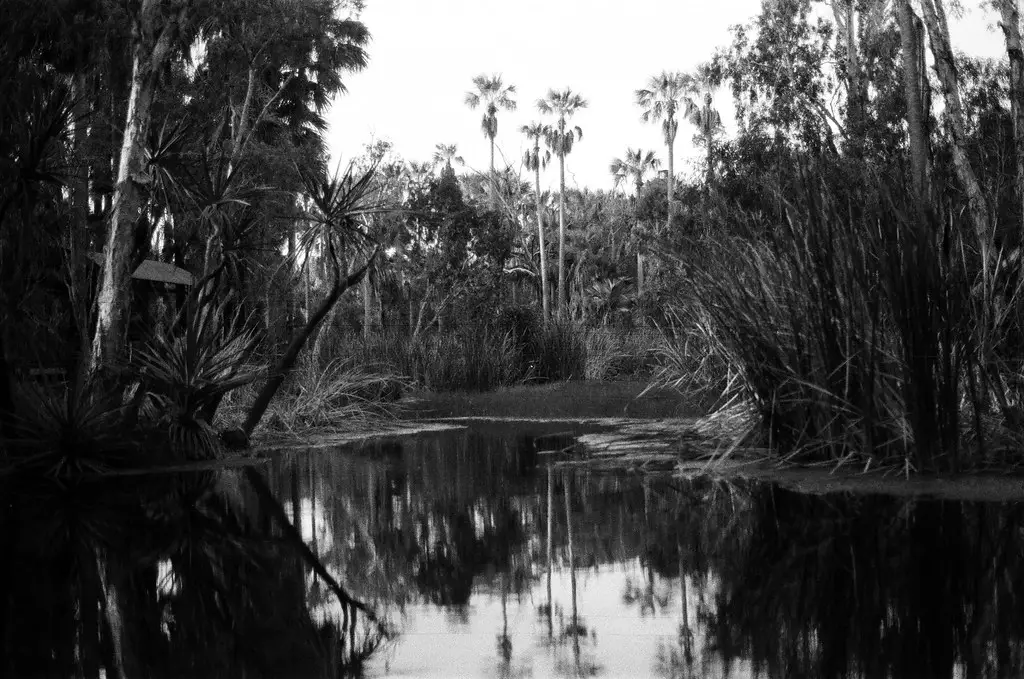
Mataranka Thermal Pool is a natural hot spring located in Elsey National Park, Northern Territory, Australia.
What to see or do: Enjoy a relaxing swim in the warm, crystal-clear waters of the thermal pool amidst the lush greenery of the park. The pool is surrounded by sandy banks and shaded by pandanus palms, making it an excellent spot for a picnic or a lazy afternoon soaking up the sun.
Don’t miss: Take a dip in the nearby Bitter Springs, a series of turquoise-colored natural hot springs with crystal-clear waters surrounded by lush greenery. You can also take a stroll along the Tjuwaliyn (Douglas) Hot Springs Park and marvel at the stunning views of the surrounding landscapes.
Insider travel tips: – Visit during the dry season (May to October) for the best weather and to avoid the crowds.
12. Bitter Springs
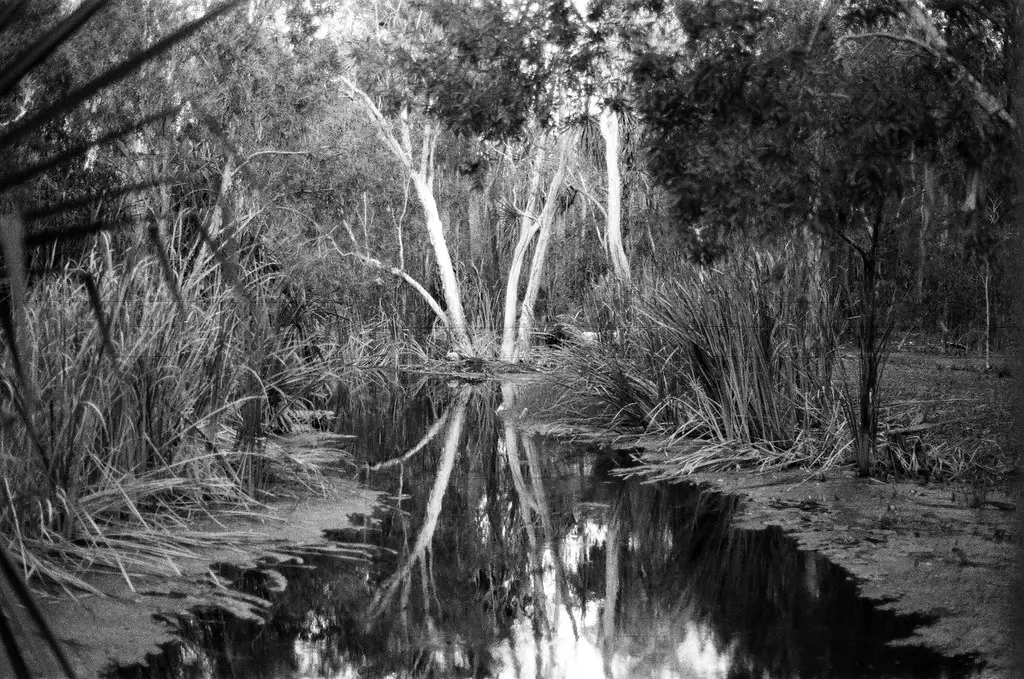
A natural hot spring located in Elsey National Park, Northern Territory.
What to see or do: Enjoy a soak in the warm and clear turquoise waters while surrounded by tropical vegetation and stunning rocky landscapes.
Don’t miss: The unique experience of drifting downstream with the gentle current along the spring-fed stream.
Insider travel tips: Bring your own inflatable pool noodle or tube to enjoy the float downstream. The water can be quite hot in some areas, so exercise caution and test the temperature before entering. It’s recommended to visit early in the morning or late in the afternoon to avoid crowds and be sure to bring insect repellent.
13. Edith Falls

Edith Falls is a series of cascading waterfalls located in the Nitmiluk National Park, Northern Territory, Australia. It is a popular swimming and picnic spot among locals and tourists.
What to see or do: Swimming and snorkeling in the crystal-clear water of the rock pools at the base of the falls. Take a scenic hike to the top of the falls for breathtaking views of the surroundings. Enjoy a picnic at the designated picnic areas with family and friends.
Don’t miss: A refreshing dip in the naturally formed rock pools. Keep an eye out for a variety of bird species and other wildlife, including freshwater crocodiles in the area.
Insider travel tips: – The best time to visit Edith Falls is during the dry season (May-September) when there are fewer mosquitoes and the water is clearer for swimming and snorkeling.
14. Florence Falls

Florence Falls is a stunning double-plunge waterfall located in the Litchfield National Park, about 90 km southwest of Darwin, Northern Territory.
What to see or do: Visitors can take a refreshing dip in the crystal clear plunge pool or admire the waterfall from the viewing platforms above. The falls are surrounded by lush monsoon forest and towering red cliffs, creating a picturesque setting for photos or a picnic.
Don’t miss: Be sure to take the short but steep hike down to the plunge pool for a swim – it’s worth the effort! Also, keep an eye out for the resident red flying foxes, which can often be seen roosting in the trees nearby.
Insider travel tips: – Visit early in the morning to avoid the crowds and enjoy the peaceful serenity of the falls.
15. Wangi Falls

Wangi Falls is a spectacular waterfall located in the Litchfield National Park of Northern Territory, Australia.
What to see or do: Visitors can swim in the refreshing clear waters of the natural plunge pool formed by the Wangi Falls. The area around the waterfall is great for picnics and relaxing with family and friends. There are also several walking trails of varying difficulty levels that offer stunning views of the surrounding tropical landscape.
Don’t miss: Don’t miss the opportunity to see the cascading waterfall and take a dip in the crystal-clear waters of the plunge pool. At night, you have a chance to spot some native wildlife including the nocturnal sugar gliders.
Insider travel tips: Visit early in the day to avoid the crowds and get the best views.
16. Gunlom Falls

Gunlom Falls is a stunning waterfall located in the southern part of the Northern Territory’s Kakadu National Park.
What to see or do: Swimming in the serene natural surroundings is one of the main attractions at Gunlom Falls. The crystal clear waters offer a refreshing escape for visitors in the tropical heat of Australia’s north. Hiking to the top of the falls also provides stunning views of the surrounding landscape.
Don’t miss: Don’t miss the opportunity to take a dip in the equally beautiful nearby Waterfall Creek. The area is rich in wildlife and offers a chance to encounter wallabies, sugar gliders, and dingoes.
Insider travel tips: It’s best to visit Gunlom Falls during the dry season (May-September) when the falls are flowing and the swimming areas are safe. It’s also recommended to bring plenty of water and sunscreen, as the heat can be intense. The hike to the top of the falls should not be attempted by inexperienced hikers or those with mobility issues.
17. Jim Jim Falls
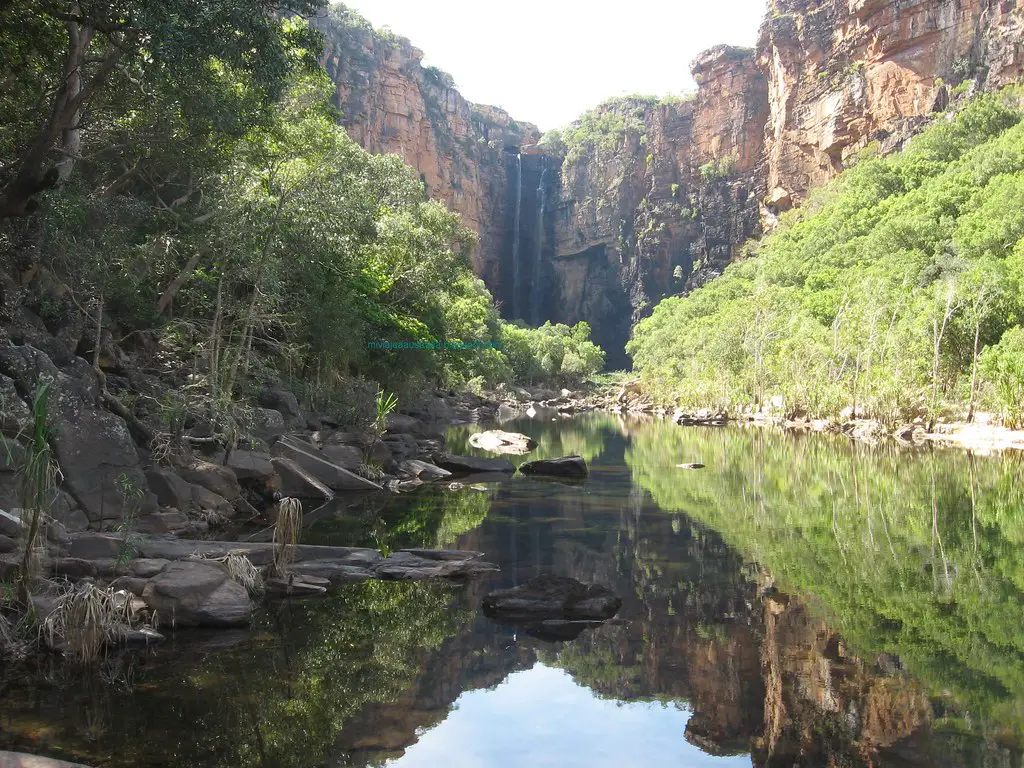
Jim Jim Falls is a two-tiered waterfall located in the World Heritage-listed Kakadu National Park, Northern Territory, Australia.
What to see or do: Enjoy a scenic drive through the park and a moderate hike to the waterfall, where you can swim in the clear rock pools and admire the stunning natural scenery.
Don’t miss: The upper pool area, which can only be accessed via a challenging 900-meter long rocky trail. However, the reward is a breathtaking view of the waterfall plunging over the rugged cliff face into the crystal clear water below.
Insider travel tips: – Check the park’s website for current road and trail conditions before your visit, as wet weather may cause closures and limited access.
18. Twin Falls
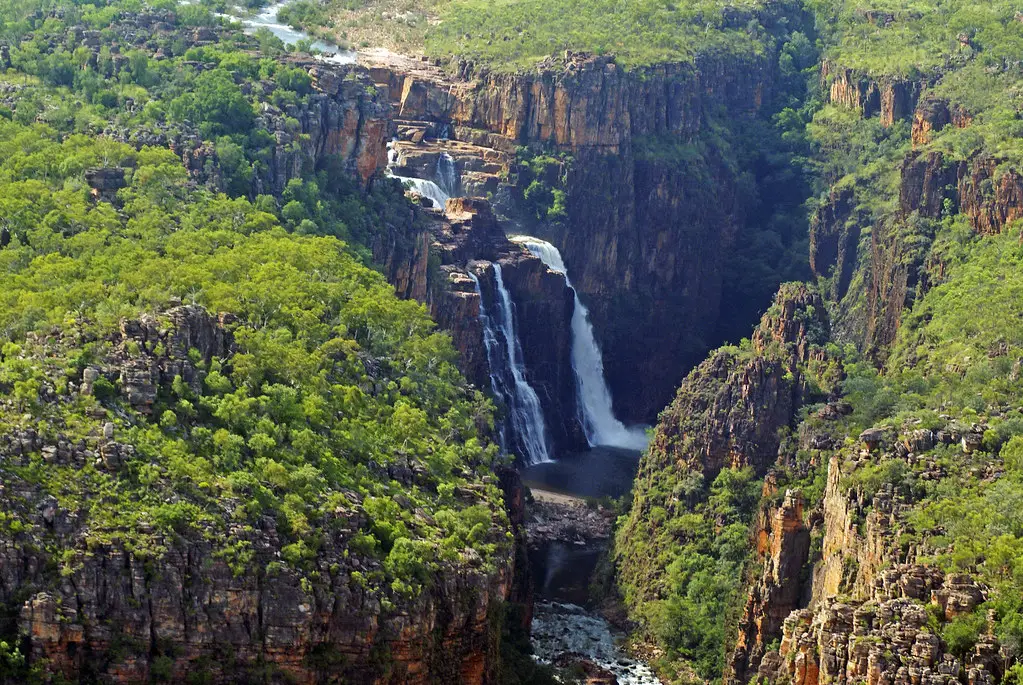
A breathtaking waterfall located in the Kakadu National Park in the Northern Territory of Australia.
What to see or do: Take a refreshing dip in the crystal-clear waters below the falls, which flow year-round. Hike the moderately difficult 3.5km return trail to the base of the falls, or take a scenic helicopter ride for a bird’s eye view.
Don’t miss: The opportunity to witness the traditional Aboriginal culture and rock art in the surrounding areas, offering a glimpse into ancient Australia.
Insider travel tips: Bring insect repellent and wear sturdy shoes for the hike to the base of the falls. Avoid visiting during the wet season (November to April) when access to the falls may be limited due to flooding. Consider booking a guided tour for an in-depth cultural experience.
19. Jarrangbarnmi (Koolpin Gorge)
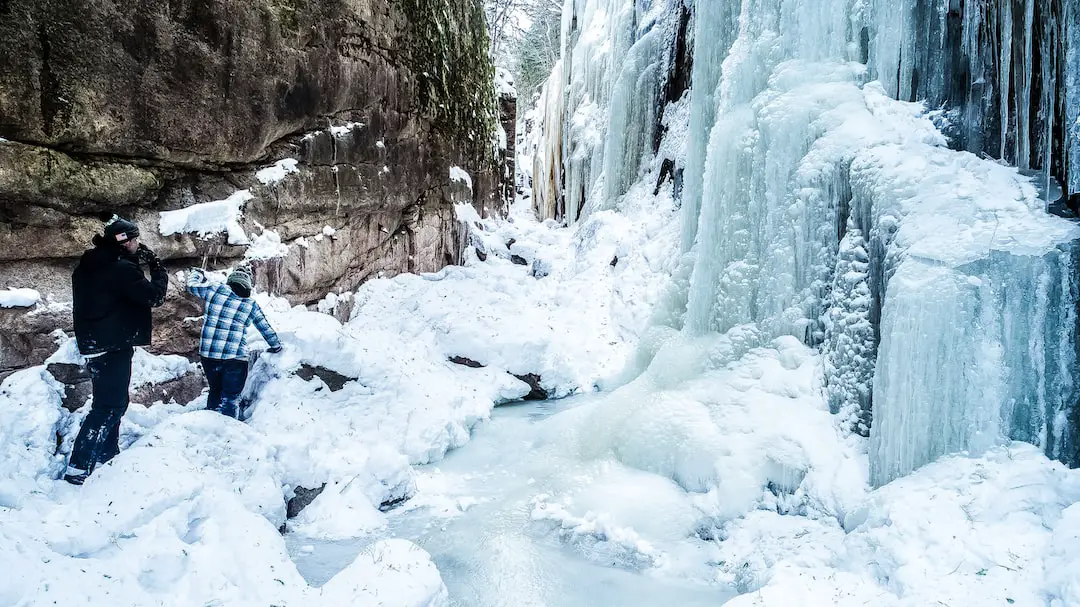
Koolpin Gorge, also called Jarrangbarnmi, is a remote and pristine section of Kakadu National Park in the Northern Territory of Australia.
What to see or do: You can take a scenic helicopter ride over the gorge or hike the challenging 12-kilometer track to access the swimming holes and waterfalls. The area is home to abundant wildlife including freshwater crocodiles, wallabies, and a variety of bird species.
Don’t miss: Swimming in the crystal-clear pools surrounded by towering red cliffs is an unforgettable experience. You can also explore the ancient rock art sites that depict indigenous culture and history.
Insider travel tips: The only way to access this pristine wilderness is through a permit required from the Northern Land Council. Plan ahead and book early as only a limited number of visitors are allowed per year. Be sure to pack plenty of water, sunscreen, and insect repellent as the area can be hot and humid.
20. Maguk (Barramundi Gorge)
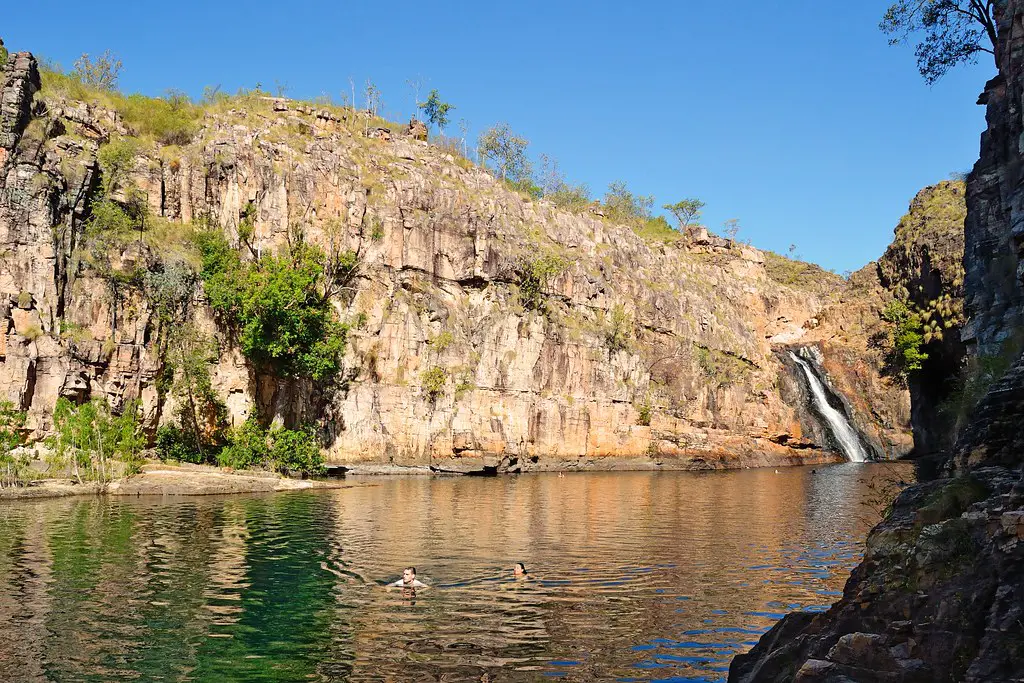
A picturesque gorge located within the Kakadu National Park in the Northern Territory of Australia.
What to see or do: Take a scenic hike through the lush rainforest to reach the refreshing waters of Barramundi Gorge. Swim in the crystal-clear pools and spot the freshwater fish and turtles that call the gorge their home. Relax on the sandy beach and admire the surrounding cliffs and waterfalls.
Don’t miss: Make sure to bring a snorkel and explore the underwater world of Barramundi Gorge. Keep an eye out for the elusive barramundi fish that the gorge is named after.
Insider travel tips: Visit during the dry season (May-October) for the best swimming conditions and fewer crowds. Be sure to bring sturdy hiking shoes and plenty of water for the hike to and from the gorge. Consider hiring a local guide for an in-depth look at the fascinating flora and fauna of the area.
21. Umbrawarra Gorge Nature Park
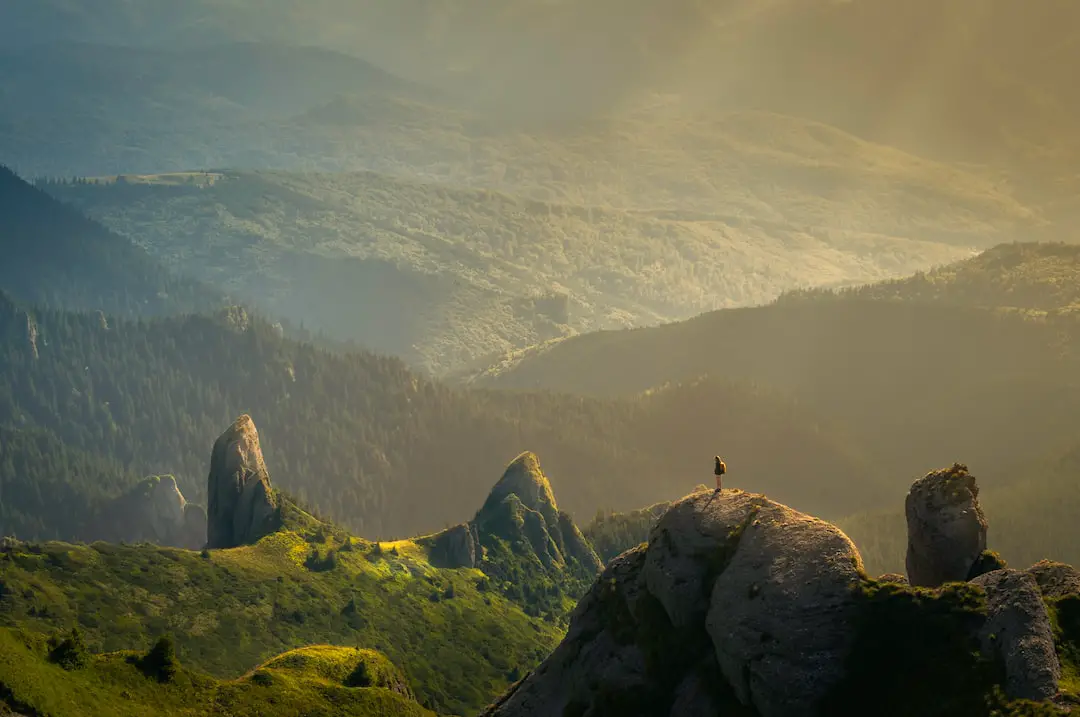
Umbrawarra Gorge Nature Park is a remote natural wonder located in the Northern Territory of Australia. The park is known for its picturesque gorges, sandy beaches, and crystal-clear pools.
What to see or do: Explore the park’s stunning landscapes on one of the various walking trails available, take a refreshing dip in one of the secluded swimming holes, or set up camp and take in the natural beauty of the park. Umbrawarra Gorge is also a great spot for bird watching, with over 100 species of birds native to the area.
Don’t miss: A hike through the gorge, which features towering rock formations and unique geological features. Keep an eye out for the native wildlife, such as wallabies and dingoes, that roam the park.
Insider travel tips: – Be sure to bring plenty of water and sunscreen, as the park can get extremely hot and dry.
22. Keep River National Park
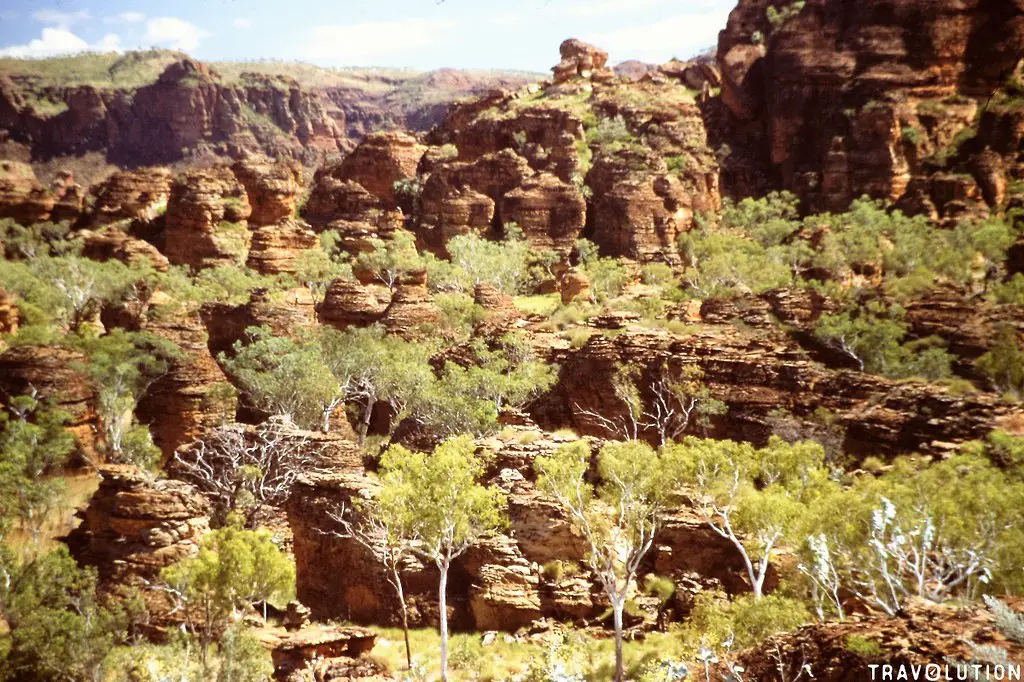
Keep River National Park is a remote wilderness reserve in the far north-eastern corner of Western Australia, near the border with the Northern Territory.
What to see or do: The park is renowned for its striking rock formations, deep gorges, and stunning landscapes. Visitors should explore the colorful sandstone cliffs, take a dip in the natural pools, and go hiking through the rugged terrain. Birdwatchers will also appreciate the wide variety of birdlife found here.
Don’t miss: The towering sandstone pillars of the Kununurra formations are one of the park’s most iconic landmarks. Also, check out the Jarnem lookout for panoramic views of the park’s landscape.
Insider travel tips: The best time to visit Keep River National Park is during the dry season from May to October when temperatures are cooler and the park is less prone to flooding. Make sure to pack plenty of water and sun protection as temperatures can still get hot during the day.
23. Gregory National Park
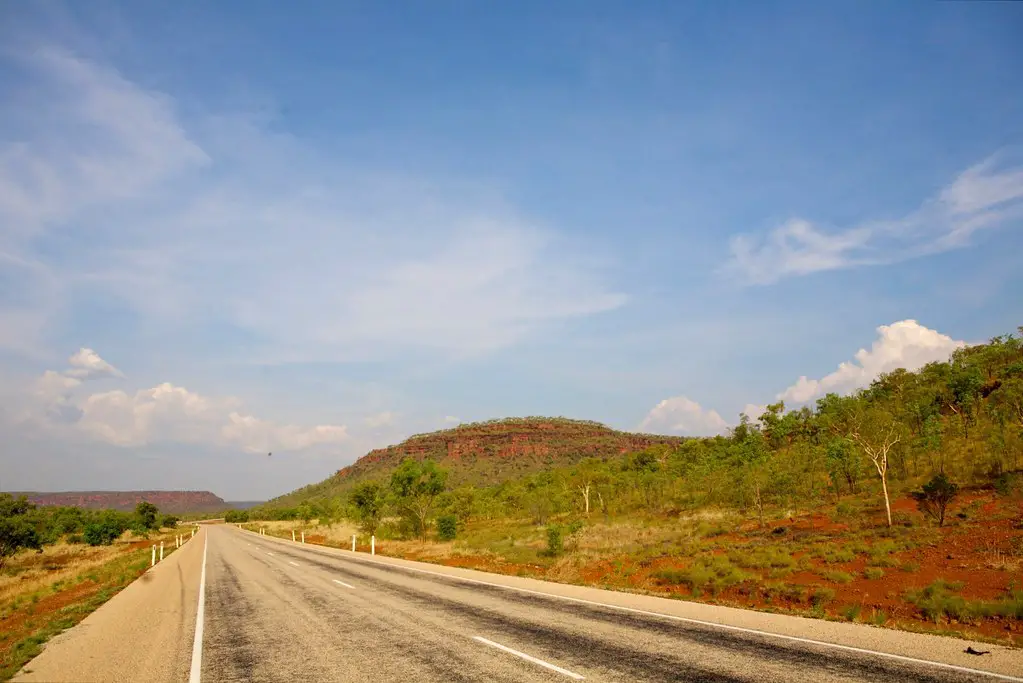
Gregory National Park is a wilderness area located in the northern part of the Northern Territory, Australia. The park spans over 13,000 square kilometers of rugged terrain and is home to an abundance of wildlife, unique rock formations, spectacular gorges, waterfalls, and stunning landscapes.
What to see or do: Explore the vast landscape in your 4WD, and take in the stunning sights of the gorge country, sandstone cliffs, and the escarpment.
Don’t miss: Don’t miss the chance to witness the jaw-dropping wonder of Victoria River, with the stunning scenic panoramic views overo the river from the escarpment.
Insider travel tips: The park is open year-round, but some areas may be closed during the wet season (November to April) due to flooding.
24. Karlu Karlu (Devils Marbles) Conservation Reserve

Karlu Karlu is a conservation reserve located in the Northern Territory of Australia. It is famous for its impressive rock formations, known as the Devils Marbles.
What to see or do: The Devils Marbles are the main attraction, where visitors can marvel at the fascinating rock formations and explore the reserve’s scenic walking trails.
Don’t miss: Watching the sunrise or sunset over the Devils Marbles is a must-see experience that should not be missed. Additionally, stargazing at night is another spectacular activity.
Insider travel tips: – The best time to visit is during the cooler months from April to September.
25. Mary River National Park

Mary River National Park is a protected area located in the Northern Territory of Australia. The park covers 2,810 square kilometers of stunning landscapes that consist of wetlands, woodlands, and hills.
What to see or do: – Visit the Mary River Wetlands to witness a spectacular amount of wildlife such as saltwater crocodiles, jabirus, brolgas, and many species of migratory birds.
Don’t miss: – The opportunity to take a crocodile watching tour at the Mary River Wetlands, which offers a thrilling and educational experience.
Insider travel tips: – The best time to visit Mary River National Park is from May to September when the weather is mild and dry, and the wildlife is most active.
26. Arnhem Land

A vast and remote wilderness area in the Northern Territory of Australia, which is home to many different Indigenous communities.
What to see or do: Experience traditional Indigenous culture, explore stunning natural landscapes and encounter unique Australian wildlife. Hike through rugged terrain, visit ancient rock art sites, or embark on a fishing or hunting adventure.
Don’t miss: The chance to witness traditional Indigenous ceremonies, learn about Dreamtime stories and bush tucker, and immerse yourself in the fascinating culture of the region.
Insider travel tips: To visit Arnhem Land, you will need to obtain a permit from the Northern Land Council. It’s recommended to book a tour with a local Indigenous guide who can provide insight into the culture and community. Prepare for rugged and remote conditions, bring plenty of water, and ensure you have appropriate clothing and footwear for the terrain.
27. Mereenie Loop Road

Mereenie Loop Road is a scenic and adventurous 155km four-wheel-drive track that links Alice Springs to Kings Canyon and Uluru in the Northern Territory, Australia.
What to see or do: The road passes through stunning desert landscapes, red rock formations, and rugged mountain ranges. There are also several Aboriginal communities and sacred sites along the way, including the Palm Valley and Finke Gorge National Parks, Hermannsburg Historic Precinct, and Wallace Rockhole.
Don’t miss: Make sure to stop and take in the views at Glen Helen Gorge, Simpsons Gap, and Kings Canyon Rim Walk. The famous Uluru and Kata Tjuta (The Olgas) are also accessible via the Mereenie Loop Road.
Insider travel tips: – The road is only accessible to four-wheel-drive vehicles, and a permit is required to travel through some of the Aboriginal lands along the way.
28. Stuart Highway
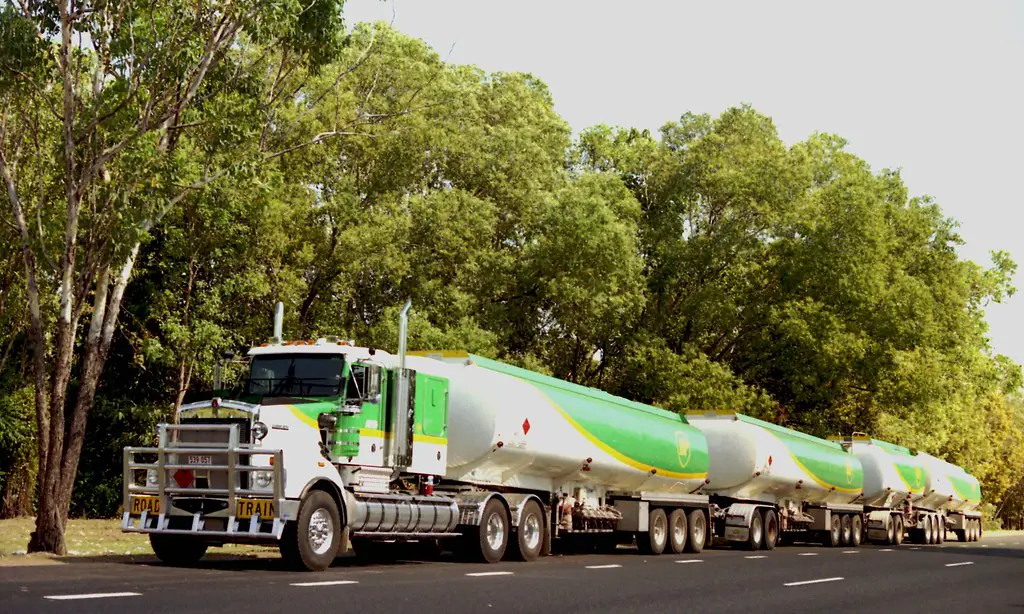
A long stretch of highway that runs through the Northern Territory of Australia, from Darwin in the north down to Port Augusta in South Australia.
What to see or do: The Stuart Highway offers stunning views of the rugged Outback landscape, with plenty of opportunities to stop off at small towns along the way. Visit the Devil’s Marbles, a unique geological formation consisting of large granite boulders, or explore the historic gold-rush town of Tennant Creek.
Don’t miss: Uluru (Ayers Rock), a sacred site to the local Indigenous people, is just off the highway and is a must-visit.
Insider travel tips: Be sure to stock up on supplies such as fuel and water before embarking on the journey, as there are long stretches of road without any services. Also, be aware of the heat and wildlife, as temperatures can soar and animals can pose a hazard on the road.
29. Kings Canyon (Watarrka) National Park
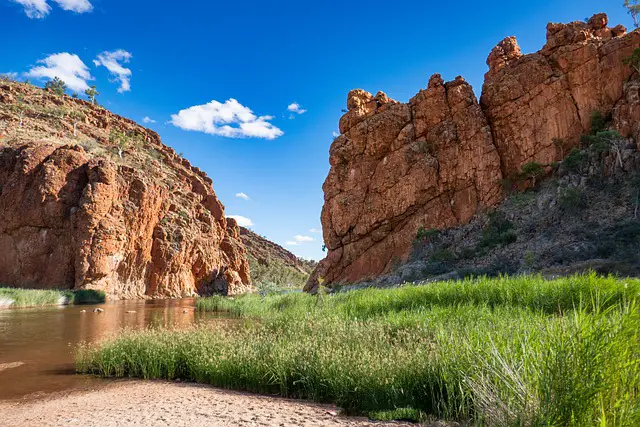
Kings Canyon is a spectacular desert landscape located in the Northern Territory of Australia, renowned for its towering sandstone cliffs and breathtaking walks.
What to see or do: Take a hike along the Kings Canyon Rim Walk and witness awe-inspiring views of the Watarrka National Park, including the aptly named Garden of Eden and the Lost City. Marvel at the unique rock formations and sandstone domes that make up this landmark.
Don’t miss: Make sure to visit Kathleen Springs within the park, where you can find out about the cultural significance of this land to the local Indigenous people. Plus, keep your eyes peeled for the diverse wildlife including lizards, wallabies and a range of bird species.
Insider travel tips: Plan to arrive early in the morning to beat the heat and the crowds on the popular Rim Walk. Also, be prepared with plenty of water and sun protection. It is also worth noting that the climb to the top of the canyon can be strenuous and is not recommended for those with mobility issues or in poor health.